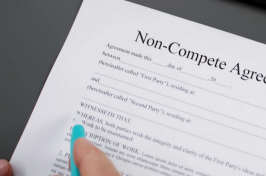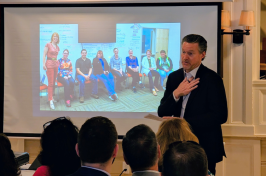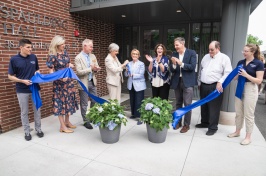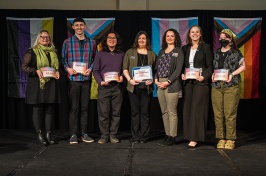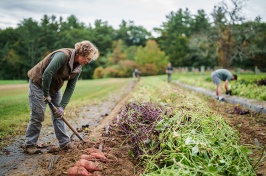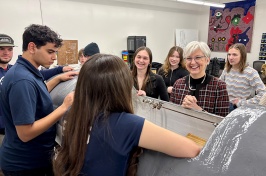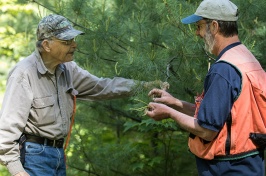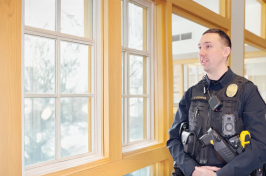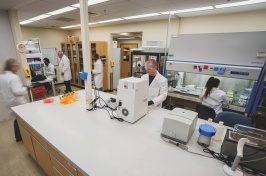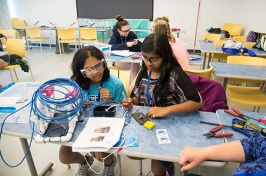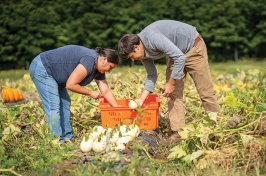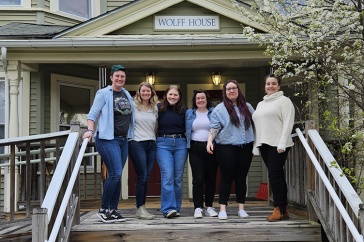Consent in the LBGTQ+ Community
On Thursday, April 25, SHARPP and UNH Women’s Studies will be hosting a discussion on what consent looks like within the LGBTQ+ community.
Join the discussion from 3:40 to 5 p.m. in DeMeritt 240.
Let’s establish a few key things.
- Firstly, queer people are deserving of the same rights to nonviolence that cisgender and heterosexual people are. There is no distinction between people in or outside of the community when it comes to who gets safety, freedom and support. Being a part of marginalized group does not mean that standards of treatment should be lower. Being a part of a marginalized group does not make someone else’s trauma less of a priority.
- Secondly, people who are part of the LGBTQ+ community are able to be abused and are also capable of being abusers. There is often a misunderstanding that abuse in queer relationships is only mutual fighting. Power and control dynamics that exist in cisgender and heterosexual relationships can manifest in queer relationships as well.
- Thirdly, queer people face specific challenges in relationships that cisgender and heterosexual people don’t. That is a central piece of understanding how to support queer survivors.
Oftentimes, people like to keep things simple. Only one case is considered, multiple perspectives aren't treated as relevant and assumptions are key to a process. As a society, the default is opposite-sex couples. Treating straight people as the only relevant case leaves a huge gap for members of the LGBTQ+ community. When a person receives sex education, there is often no content for people who are not in opposite-sex relationships. This leaves same-sex couples with little guidance about safe sex or healthy relationships. This lack of attention to LGBTQ+ issues also extends to some sexual violence presentations, studies and centers. Many make sure to have resources available for LGBTQ+ people. However, there is no guarantee that a queer person will be represented in conversations about consent and safety. This endangers LGBTQ+ survivors who may not feel able to access the necessary support.
The defaulting to opposite-sex couples masks the dangers that LGBTQ+ people face: 25 to 33 percent of LGBTQ+ relationships include abuse. This is approximately equal to heterosexual and cisgender relationships. Neglecting to include LGBTQ+ context keeps those survivors isolated.

Abusers in same-sex relationships often threaten to out someone against their will. This can endanger the survivor in multiple settings. It can also remove the places for a survivor to find safety in if they try to leave the abuser. Using someone’s past experiences with rejection and trauma is also a way that abusers try to control a partner. Many members of the LGBTQ+ community face rejection from their family or community. This allows the abuser to take control and position themselves as the only person who will accept the survivor and, thus, manipulate them. An abuser can also use this common trauma to convince a partner to stay. By prioritizing vulnerabilities of the abuser, the partner is coerced into staying in the relationship.
Like heterosexual and cisgender couples, the ongoing issues of rape culture and problems with laws contribute to a survivor’s trauma. There is an added dimension when it comes to LGBTQ+ relationships. A prime example of this is the fact that many states do not grant parental status to nonbiological LGBTQ+ parents, and not all LGBTQ+ survivors have access to the resources that would allow them to assert legal rights. This means that some survivors have to choose between staying in an abusive relationship or losing all contact with their children. That makes the decision incredibly difficult, if not impossible.
Survivors are also less likely to trust resources around them. The LGBTQ+ community has a contentious relationship with law enforcement. Many people do not feel comfortable going to police. The same applies to the medical system, which can reduce options for people seeking medical treatment after an assault. Abusers in same-sex relationships take advantage of systemic oppression and use it against the survivor. The community element is also complicating. LGBTQ+ communities can be small. An abuser can manipulate this, ensuring that the survivor cannot feel safe in the place in which they would expect to be accepted. The limited number of open and affirming spaces that exist means that survivors can be easily ostracized.
Another issue relating to LGBTQ+ couples is how the community has historically been relegated to the fringe. Because of issues relating to laws and acceptance, the LGBTQ+ community has historically existed in places that can pose a threat, like bars. For similar reasons, higher rates of drug abuse exist in the queer community. By placing same-sex couples on the outside of acceptability, they are being put in the same place as abuse. This can be seen in the common equating of pedophilia and homosexuality. The former is a terrible form of child abuse. The latter is an identity. Not allowing acceptance for queer people means that the issues faced by the community cannot be fully addressed.

On the UNH campus, members of the LGBTQ+ community have several options to them for support and services such as Office of Multicultural Student Affairs, PACS and the UNH Diversity Support Coalition. SHARPP, which is located next to Health & Wellness, offers confidential support and services for all members of the UNH community. SHARPP can provide culturally competent advocacy and direct services to queer people. SHARRP also has a resource page with information available online. On Thursday, April 25, SHARPP and UNH Women’s Studies will be hosting a discussion on what consent looks like within the LGBTQ+ community. Join the discussion from 3:40 to 5 p.m. in DeMeritt 240.
Author’s Note: Trans and nonbinary people face high rates of gender violence. To allow for enough time devoted to the specifics of that violence, a later article will focus specifically on people who are not cisgender. Though this article may touch on those issues briefly, they are deserving of their own blog post. The word “queer” has a contentious history and has often been used as a slur. In no way does this article condone that. As the word has been reclaimed over time by the LGBTQ+ community, it is used in this article to refer to someone who is a part of that community.
-
Written By:
Colleen Spear '21 | SHARPP







